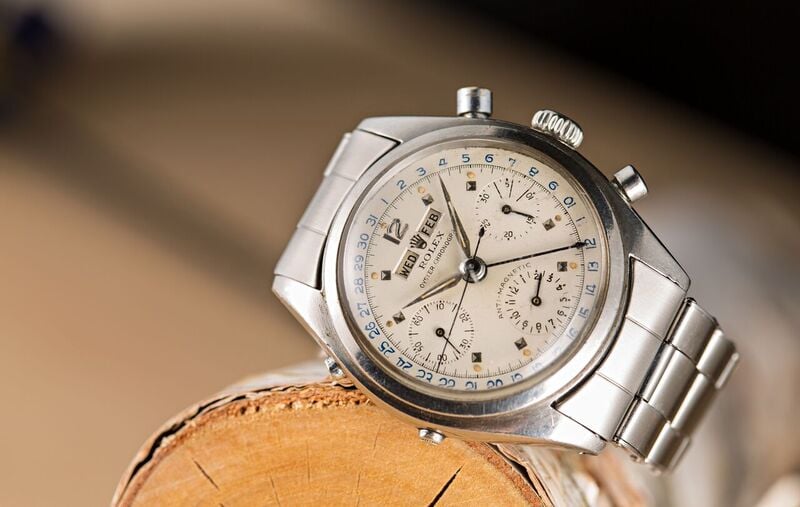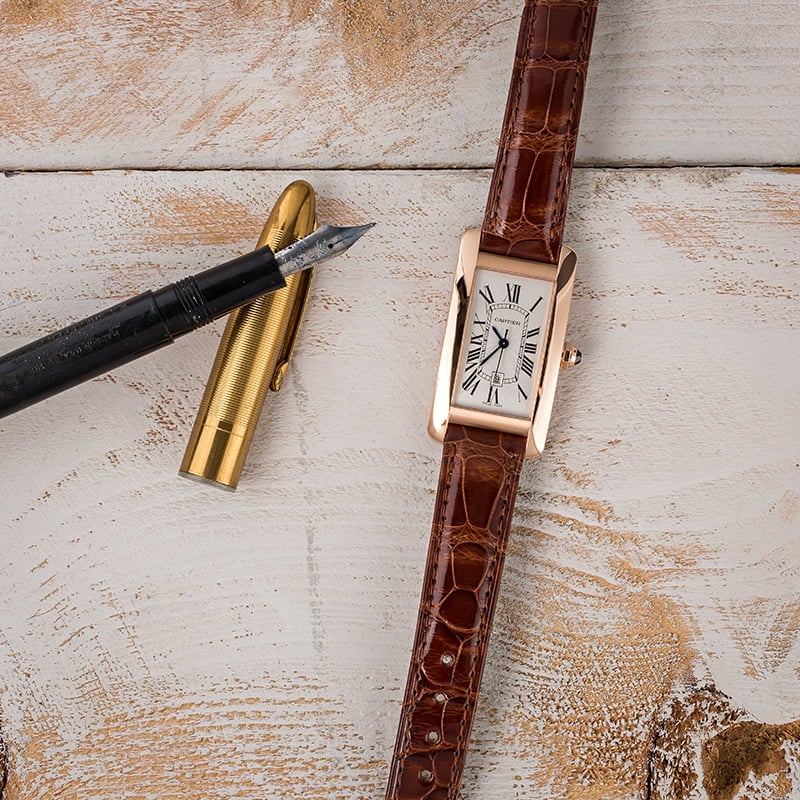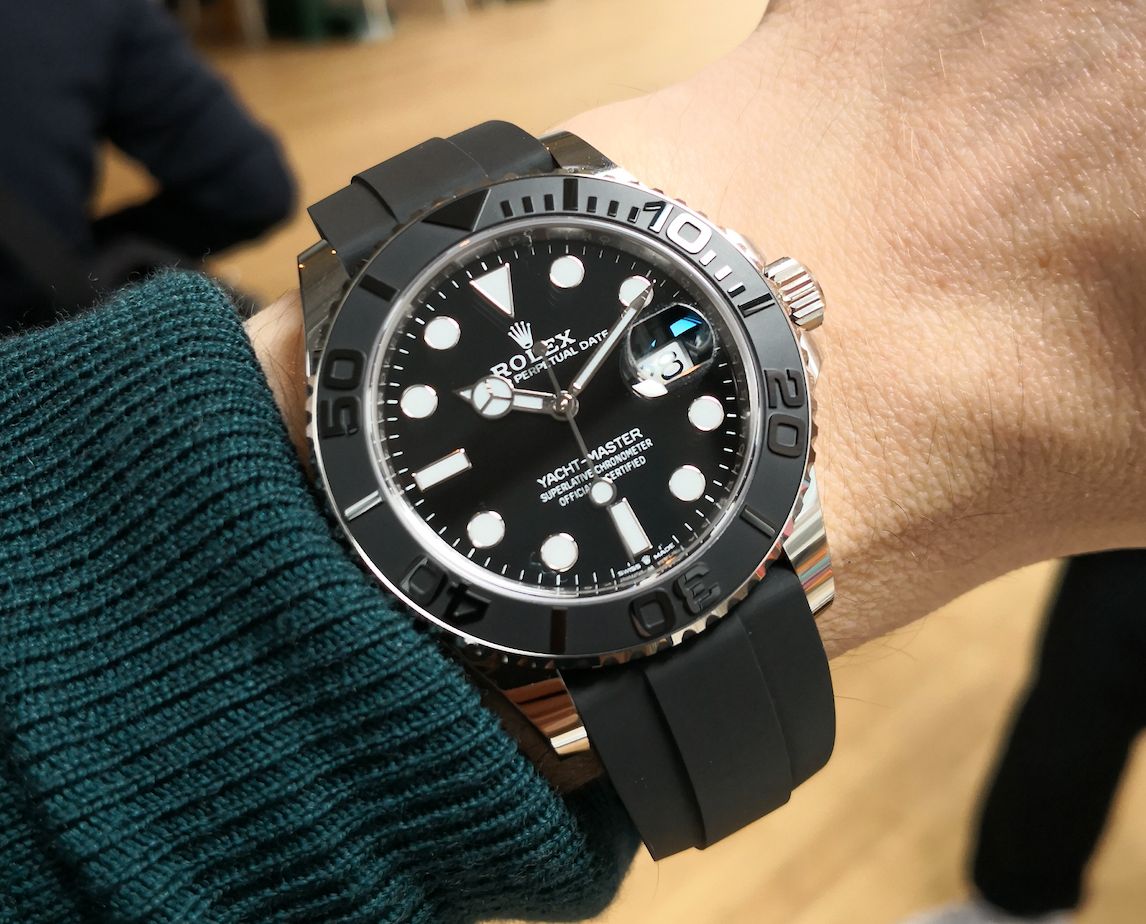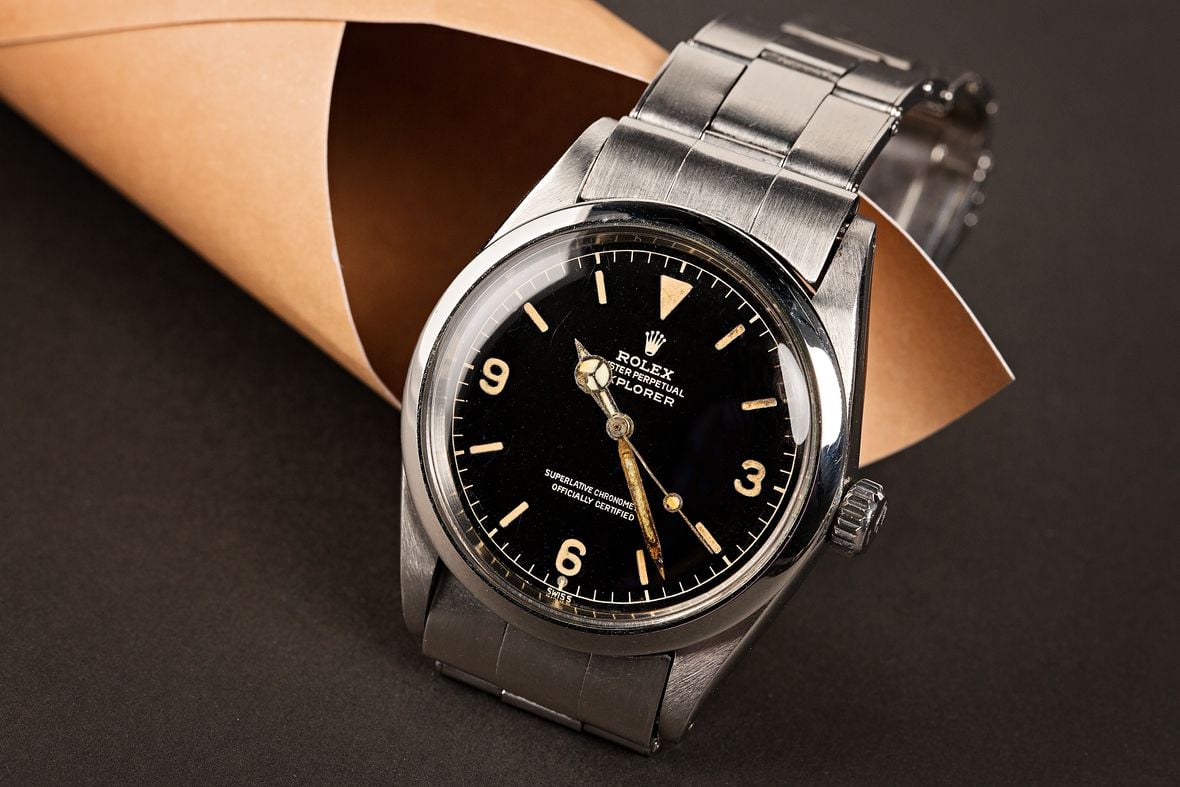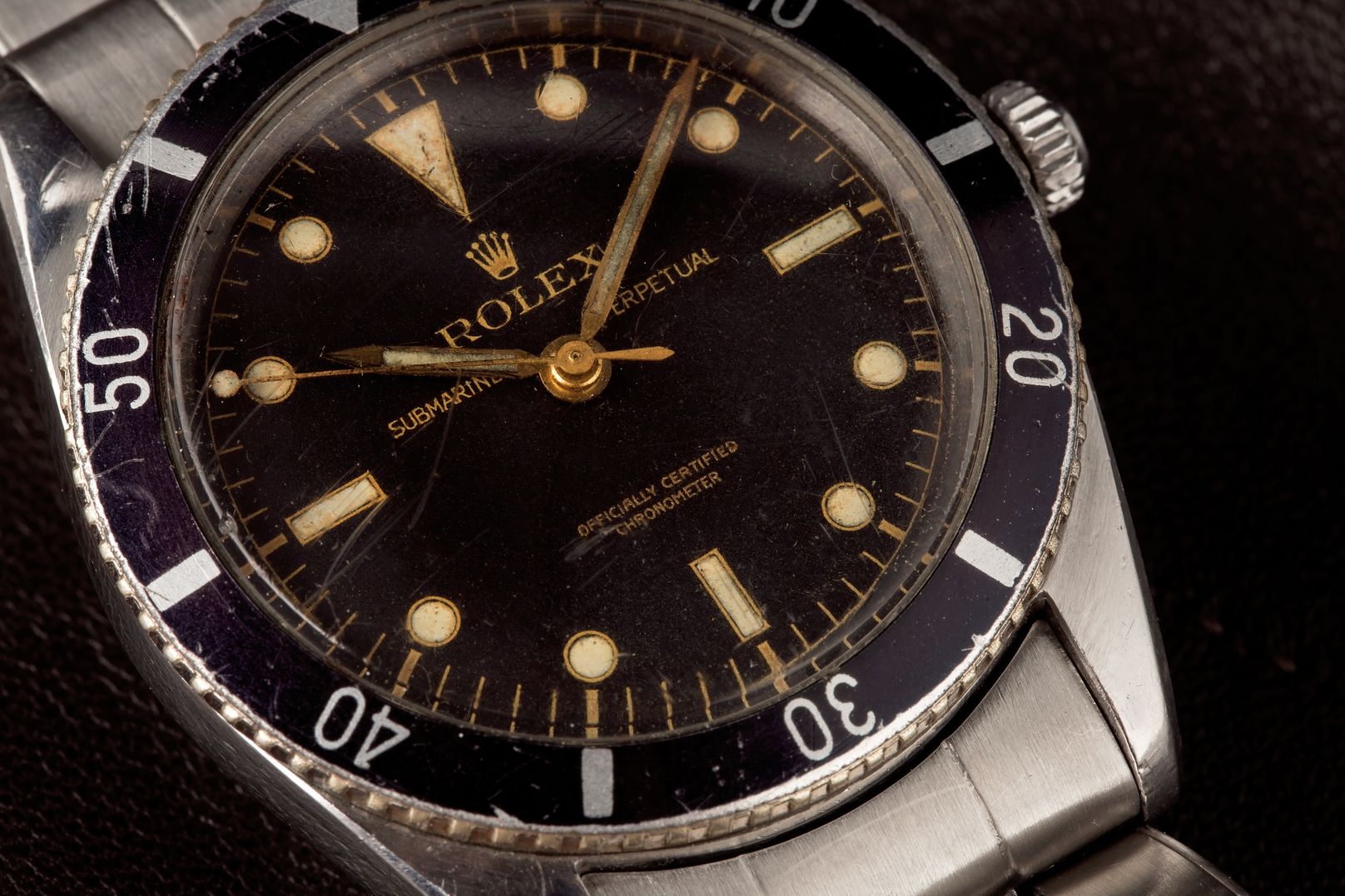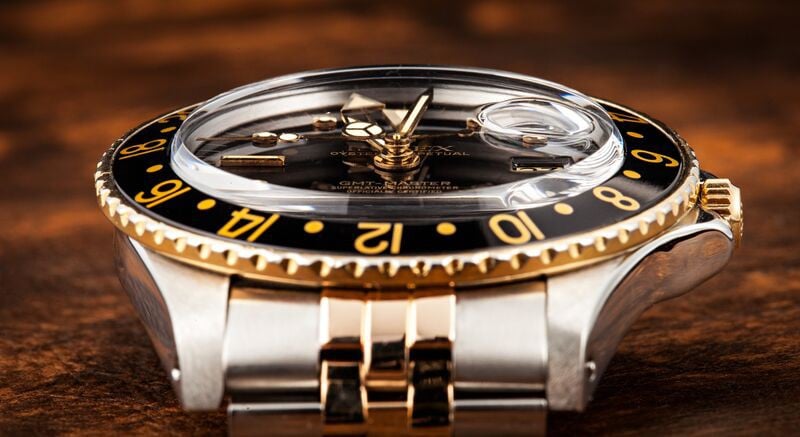At first glance, the Oyster Dato-Compax doesn’t even look like a Rolex. A day and month feature at 12 o’clock? The date on the outer track of the dial? Three chronograph sub-dials? It’s far too complicated and far too busy to be part of the famous Swiss crown – or so you’d think.
An incredibly rare collectible from the 1940’s and early 1960’s, the Oyster Dato-Compax stands out amongst the rest of the vintage Rolex watches out there. Most notably, there is the uncharacteristically busy, yet pretty refined dial. But more interestingly, and mysteriously, is the nickname.
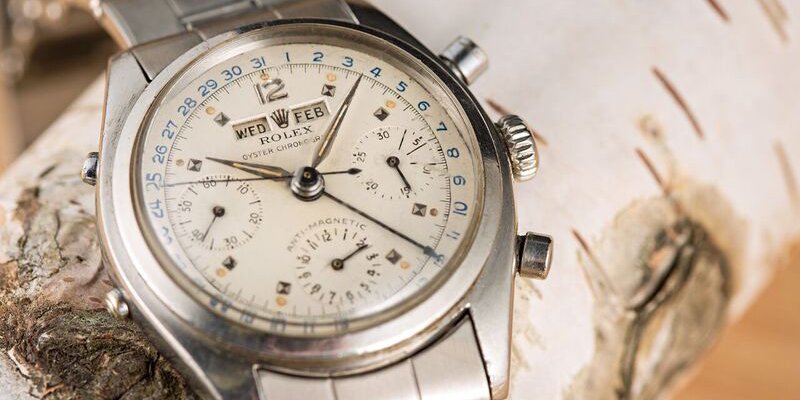
Distinctly Dato: History of the Rolex Dato-Compax
When the first Dato-Compax was released in 1947, it was the brand’s first triple calendar chronograph outfitted with a water-resistant Oyster case. To this day, the Cal 72C mechanical movement with 17 jewels is one of the company’s most complicated and the only one to boast a triple calendar complication.
Over the next two decades Rolex released the Dato-Compax in five different references – the 4768, 4767, 5036, 6036 and the 6236. As the model modernized, the bezel got bigger and Rolex started tweaking the dial design. But even as the watch evolved over the years, the distinctly complicated dial remained intact.
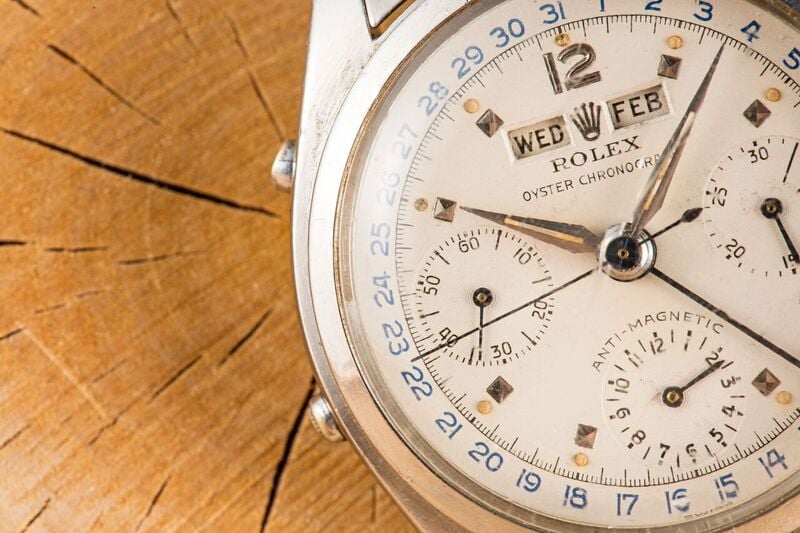
Up top below 12-o’clock, the day and month complications flank the Rolex coronet in small rectangular dial cut-outs. Three sub-dials, outfitted in Arabic numerals sit at three, six and nine o’clock. What at first looks like an old school tachymeter scale on the inside of the dial (because that’s what they used to do before it got moved to the bezel) is actually the date complication which is pointed out by a long, centrally-mounted hand. Not like the date needs extra pointing out, because the numerals are printed in this wonderful blue color that makes this already unique watch all-the-more special. Three other hands spin around the center of dial – the hour and minute hand featuring a luminous strip down their sword-shaped frame.
Although famously busy for a Rolex, I have to admit the dial of the Oyster Dato-Compax itself is quite easy to navigate. Plus, the vintage models that you’re lucky enough to see today have often developed the most beautiful patina that makes the blue numerals and engine-turned sub-dials pop.
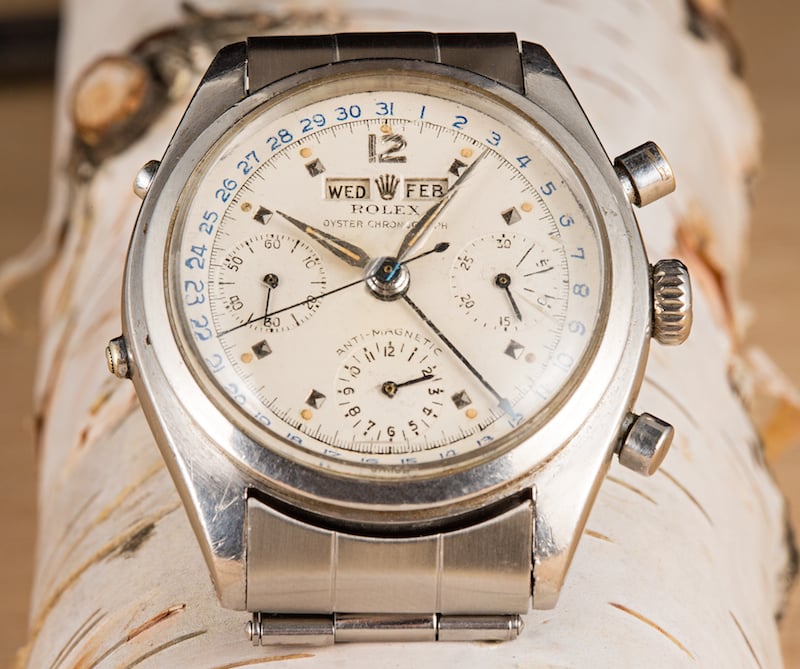
How A Skier Got A Rolex Nicknamed After Him
You don’t need to be an avid skier to have heard of Jean-Claude Killy. The Frenchman was a prolific athlete who, just at the 1968 Winter Games alone, won three gold Olympic medals. Naturally, he went on to become a Rolex ambassador, a role he stayed in for more than four decades.
However, the interesting thing is that while the Rolex Oyster Dato-Compax also goes by the ‘Jean-Claude Killy’ moniker, he was never actually photographed wearing one. Rumor has it he used to wear a late reference 6236 and it became synonymous with him. But to this day, we don’t have any proof. Years later it was revealed that he did in fact own a ref. 6236 – I guess we’ll just never know how much he wore it. Although, if he knew how much it was worth today, we bet he’d love it just as much as we do.
